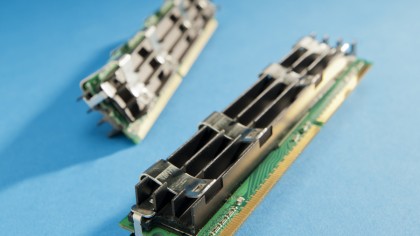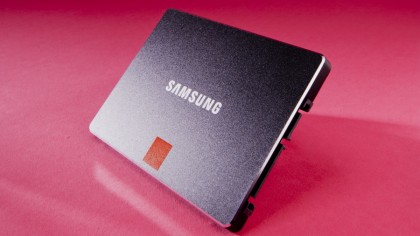How to speed up your Mac in 30 minutes
Got a slow Mac? We've got the answer
Memory upgrades

The easiest way to increase the working performance of your Mac
Apple has traditionally been a bit stingy with the amount of RAM it includes with its systems, so Macs often run out of RAM breathing room as users begin to make more sophisticated demands on their systems. Of all the hardware improvements you can make to your Mac to dramatically improve performance, adding RAM is usually one of the least expensive and most effective.
Adding more RAM makes it possible to have more applications and documents open simultaneously without making the Mac have to swap what's in its RAM to a virtual memory file. Using virtual memory is much slower than using 'real' memory, because it's actually a file written to the hard drive.
The first thing you'll need to do is figure out how much RAM is currently in your Mac. If you're not sure, select About This Mac from the Apple menu, and it will tell you. In Mountain Lion, clicking the More Info button yields an overview of how your Mac is set up; clicking the Memory tab will tell you specifically how your Mac's memory is configured to work.
Soldered on
Some Macs don't have upgradable memory, like the MacBook Air, the new 21.5-inch iMac and Retina display-equipped MacBooks; the memory is soldered onto the motherboard and can't be easily replaced. Others, like the Mac Pro, new 27-inch iMac and recent-era Mac minis, can easily accommodate additional memory by replacing existing chips or using existing open slots.
The More Info window can be deceiving: it might tell you your MacBook Pro has two memory slots, each of which accepts a 1600MHz DDR3 memory module and each of which is occupied by an 8GB memory chip. That's how it appears to the system, but if it's a Retina display-equipped MacBook Pro, it can't be upgraded.
Third-party vendors such as Crucial offer easy-to-use web-based tools to help you figure out which RAM to order for your particular system, or even if your particular machine is upgradable at all.
Get daily insight, inspiration and deals in your inbox
Sign up for breaking news, reviews, opinion, top tech deals, and more.
For what it's worth, Apple is okay with users opening up their machines to put in more RAM. Some Macs are more accessible than others - older Mac minis, for example, require a spudger tool to pry the case apart and demand extensive disassembly before you can get to the RAM; newer ones make RAM slots available by turning a panel on the bottom, no tools required.
If you decide you're up for doing the job yourself, make sure to take precautions: work in a clean, well-lit area, and keep an anti-static strap on your wrist to keep the chances of zapping your Mac's delicate circuitry to a minimum.
Solid-state storage

Replace your aging hard drive with the latest solid-state technology
Solid-state drive technology (SSD) is being used more and more in new and old computers alike, and it's easy to see why. Apple's been able to produce ever-more slender laptops in part by eliminating bulky hard disk drives and replacing them with much faster solid-state storage.
A hard disk drive is a very physical device. Under the hood of a hard drive is a magnetised platter, or sometimes a stack of platters, rotating around a spindle at a high rate of speed - typically 5400 or 7200 revolutions per minute. A small actuator arm extends from one corner of the enclosure to just above the disc surface, where tiny heads read from and write to the surface of the platters magnetically.
If it sounds archaic, that's because it is. Hard drive technology has been around since the 1950s. By comparison, SSDs have no moving parts. SSDs are simply integrated circuits that store data even when the power to the computer is turned off, thanks to the use of a special type of flash memory (similar to what's used in iPads and iPhones).
Because there are no moving parts, SSDs are much, much faster than hard drives: reading and writing data is quicker, and you spend less time waiting for the 'disk' to find the information, too. They're also less susceptible to physical shock for the same reason, and they produce no noise.
Not cheap
If SSDs are so great, why isn't everyone using them? They're still relatively expensive - many times more expensive, per gigabyte, than a hard disk drive, at any rate. Consider that a 128GB SSD can cost the same as a 1 terabyte (TB) hard disk drive. So unless you have very deep pockets or a very generous benefactor, chances are you're going to pay a lot more for a lot less storage.
But what you lack in storage you will make up for in blazing speed. While boosting RAM may offer the best overall bang for your buck, replacing a pokey old hard drive with an SSD is the quickest way to supercharge an ailing system, especially since paging RAM out is much faster.
SSDs now come available in replacement enclosures that look like traditional hard disk drives, and they will drop right into place where the hard drive goes - the screws to hold them in place will line up right where you expect, and the cabling is the same.
If the idea of less storage is daunting, there may be another solution. Other World Computing, for example, makes kits that enable some MacBook and MacBook Pro users to remove the SuperDrive and fit the hard disk drive there instead, then put an SSD in the empty spot where the hard drive was.
Or, if you're using a Mac Pro, you can put an SSD in an empty SATA hard drive bay. In those cases, you can move your OS and crucial apps and documents to the SSD but continue to use a hard disk for long-term storage.
Current page: Memory and storage upgrades
Prev Page 30 minutes to a faster Mac Next Page Expansion cards